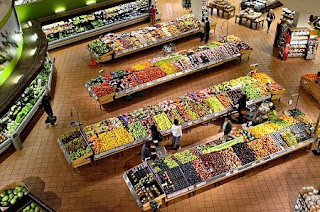Food
Sustainability
When we go to the
procurement, we need to carefully select the type of food we buy, and it is
very important to check the shelf life, or the date of production, in order to
prevent possible negative health consequences. Here are some of the most common
questions about food sustainability.
What does the term of food
lasts and what is the sustainability of certain foods?
The shelf life is the
minimum shelf life, the date by which the food retains its characteristic
properties if properly stored. Food sustainability depends on the composition,
the technological process of production, the sterilization process, the food
additives, the type of packaging, the transport and the recommended manner of
storage. Some foods are more susceptible to microbiological deterioration and
have a short shelf-life. Such products are milk products, creams, shames, ice
creams, meat and meat products, eggs. Other foods are subject to chemical
changes, especially under the influence of air, and most often have high fat
content. Even natural ingredients, such as fruit acids in inadequate packaging,
chemical reaction with an unprotected wall of packaging can cause migration,
i.e. transfer of ingredients from food packaging. Food stored in the
refrigerator or freezer is also susceptible to spoilage, since under low
temperature conditions, enzymatic and microbiological processes only slow down,
but do not stop. This means that cold prolongs the shelf life, but not
infinite, as changes in proteins, sugars and fats occur during prolonged
storage.
How is the expiration date
determined?
The manufacturer determines
the minimum shelf life in which it guarantees health and food quality under
certain conditions of storage and storage. The shelf life is determined based
on laboratory tests of chemical and microbiological parameters in changing food
storage conditions. At the same time, the sensory testing of foods is subject
to different temperatures and humidity, far more extreme than expected in
normal use. The parameters on the basis of which the shelf life is determined
are different, depending on whether the composition of the food prevails water,
fat, proteins or sugars, as well as the technological process of production.
Can food be consumed after
the expiry date?
It depends on the type of
food and its composition. Foods that are easily detrimental, primarily
susceptible to microbiological spoilage, must not be consumed after the
expiration date, and other foods must be withdrawn from sale, although they are
not necessarily health-defective. This practically means that by entering such
a type of food it can not damage health, but that food does not have a full
biological value.
How to recognize which food
is susceptible to microbial spoilage and which does not?
The minimum shelf-life of
food that is easily detrimental from the microbiological point of view and
poses an immediate threat to human health must be labeled "usable
until", followed by the date (day and month) or the date of the packing
date, and the conditions of the conditions keeping foods to be respected. For
other foods, the minimum shelf life is indicated by the words:
"Best use until
...", when the date includes at least the month and year mark;
"Best use until the end
..." when the least number of the year is indicated with the date or date
where the date is on the packaging and, if necessary, the information on the
conditions of storage of food and the period of use after the opening, which
must be followed in order to feed retained its properties.
In these foods, it is not
mandatory to state the conditions of storage.
What does laboratory food
analysis mean?
Laboratory analysis of food
primarily begins with determining the category or type of food. In doing so,
the statements on the declaration must clearly and unequivocally (ie the
manufacturer's declaration) indicate what kind of feeds are being kept.
According to the category and type of food, parameters of composition, quality,
organoleptic characteristics (color, odor, taste), microbiological and chemical
parameters are determined. Each of these parameters has a certain reference
value according to the statutory rules, in relation to which the results of the
analyzes are compared, and if they are in accordance with the prescribed, the
food is healthy and safe for human use.


Comments
Post a Comment